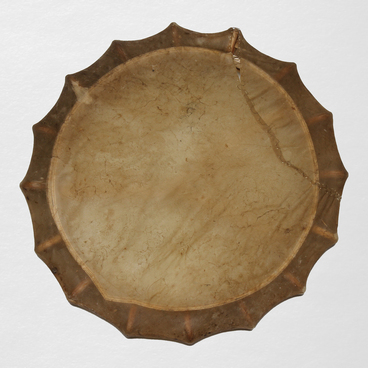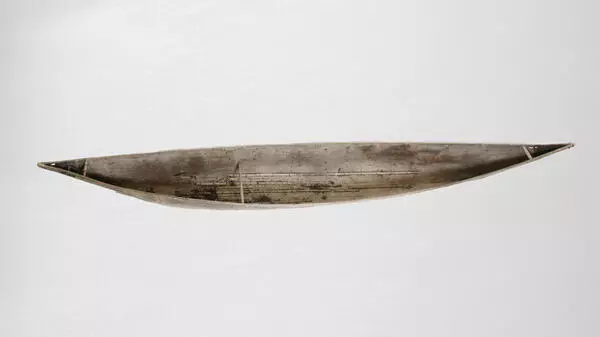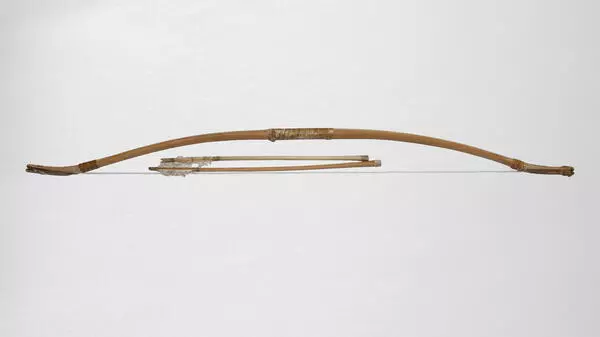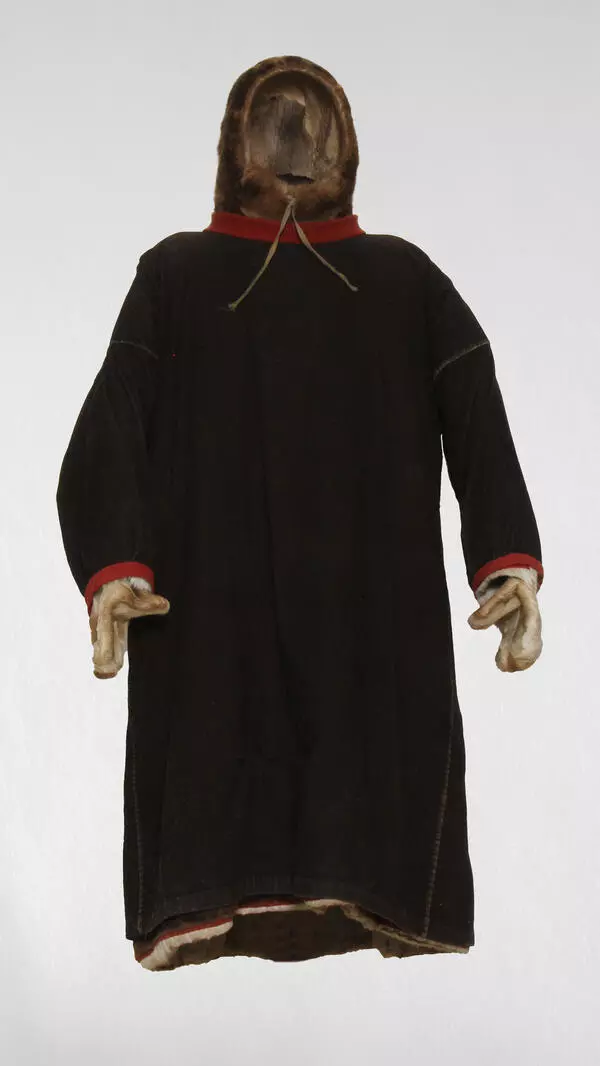Due to the need to survive in harsh environment, the life of the northern indigenous peoples was closely connected with water bodies: rivers, lakes and the sea. Therefore, in everyday life, they had used boats for a long time for fishing and hunting, searching for new hunting locations and transporting goods.
Lightweight and speedy dugout boats called “oblaski” were a popular means of transport among the Khanty and forest Nenets, they played an important role in the economic activities of these peoples.
The boat was made in several stages. First, a suitable tree was found and felled. Then the excess wood was removed from the trunk. When the sides were thick enough, the boat was treated with steam: hot water was poured inside and the boat was held over a small fire. Then the sides were made the desired width and horizontal braces were inserted. Since the white dugout boat was clearly visible in water and could scare the fish, it was rubbed with a mixture of soot and pine or fir resin.
After the boat was ready, the artisans started making an oar. It was made of spruce, and not every tree was suitable, but only the tree that had resin on the south side. Sometimes the oars were made of heavier cedar or pine wood.
The workpiece was carefully measured out and an oar was cut out of it, and then it was necessarily rubbed with the same mixture of soot and resin as the dugout boat. Only a small cross-bar needed to hold the oar was left white. Later, a special ornament was applied to it — a symbol of light water.
When the Nenets sailed down the river in a dugout boat, he rowed with one oar — alternating sides. Each family member had his own oar. They were called so: women’s, men’s and child’s oars. The men’s oar was heavier, the women’s and children’s oars were made shorter and lighter. If a man and a woman sailed together, he rowed at the stern, and she rowed in the middle of the boat.
Children sailed on their own from the age of seven to eight. First, they learned to keep the boat in balance near the shore, resting against the bottom with the oar, then sailed to deeper places. They rowed from one side, then from the other, and as their skill grew, learned to row only from one side.
Quite often, children adopted rowing techniques from their parents: if the father often rowed on the right side, then the children did it the same way.
Lightweight and speedy dugout boats called “oblaski” were a popular means of transport among the Khanty and forest Nenets, they played an important role in the economic activities of these peoples.
The boat was made in several stages. First, a suitable tree was found and felled. Then the excess wood was removed from the trunk. When the sides were thick enough, the boat was treated with steam: hot water was poured inside and the boat was held over a small fire. Then the sides were made the desired width and horizontal braces were inserted. Since the white dugout boat was clearly visible in water and could scare the fish, it was rubbed with a mixture of soot and pine or fir resin.
After the boat was ready, the artisans started making an oar. It was made of spruce, and not every tree was suitable, but only the tree that had resin on the south side. Sometimes the oars were made of heavier cedar or pine wood.
The workpiece was carefully measured out and an oar was cut out of it, and then it was necessarily rubbed with the same mixture of soot and resin as the dugout boat. Only a small cross-bar needed to hold the oar was left white. Later, a special ornament was applied to it — a symbol of light water.
When the Nenets sailed down the river in a dugout boat, he rowed with one oar — alternating sides. Each family member had his own oar. They were called so: women’s, men’s and child’s oars. The men’s oar was heavier, the women’s and children’s oars were made shorter and lighter. If a man and a woman sailed together, he rowed at the stern, and she rowed in the middle of the boat.
Children sailed on their own from the age of seven to eight. First, they learned to keep the boat in balance near the shore, resting against the bottom with the oar, then sailed to deeper places. They rowed from one side, then from the other, and as their skill grew, learned to row only from one side.
Quite often, children adopted rowing techniques from their parents: if the father often rowed on the right side, then the children did it the same way.







